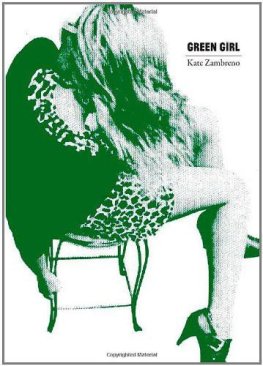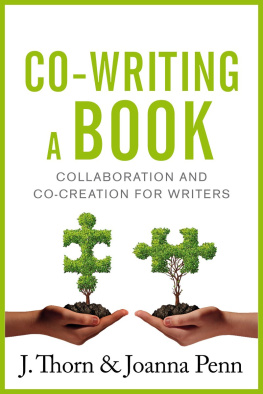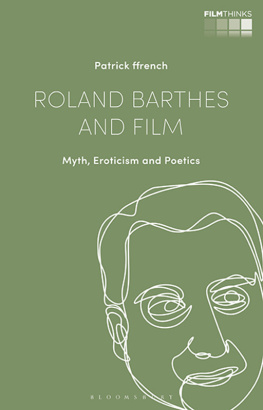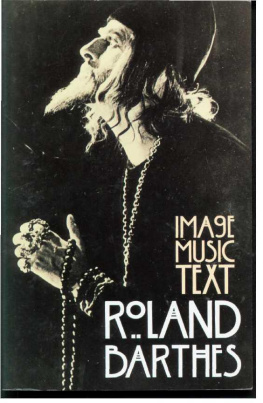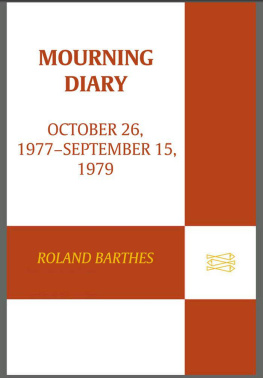Copyright 2019 Kate Zambreno
All rights reserved. No part of this book may be reproduced, stored in a retrieval system, or transmitted by any means, electronic, mechanical, photocopying, recording, or otherwise, without prior permission of the publisher.
Published by Semiotext(e)
PO BOX 629, South Pasadena, CA 91031
www.semiotexte.com
Special thanks to John Ebert.
Cover Art: B. Ingrid Olson, Untied knots, strings, she, multiple, 2018.
Inkjet print and UV printed matboard in aluminum frame, 25 x 17 inches.
Design: Hedi El Kholti
ISBN: 978-1-63590-076-7
Distributed by The MIT Press, Cambridge, Mass. and London, England
Printed in the United States of America
d_r0
This book is dedicated to my daughter, Leonora Gale.
Leo, I wrote much of this while you were napping on or near me, in the first year and a half of your life
Talk given at Printed Matter, March 16, 2017
I. TODAY
This talk was advertised as being about the books impossibility and ongoingness, although when thinking through what I hoped to think throughwhat I call lately my writing practiceI cant move past the date of this event, March 16, 2017, which when I will be reading this, will be today.
Its a strange task, to write about today. It makes me think of the date paintings of On Kawara, his Today series. All week I have been flipping through the large, heavy catalogue of his retrospective. Over almost half a century, On Kawara made 3,000 paintings bearing only the date in which he made the painting. The painting was begun and finished on the same day. If he did not complete a painting by midnight he would destroy it. He had an elaborate system for coding and archiving these date paintings, involving storing them in a box with the newspaper of the day. In this way, a painting represents the process of an entire day. Occasionally, on a single day, he would make two or even three paintings. When he was out of town, he would make the paintings in his hotel room, and the paintings then were of a smaller size. Those paintings were usually gray, as opposed to his typical black, or occasional red or blue. There were long stretches of time in which On Kawara produced a date painting every day.
I like thinking of how On Kawara worked all day on one painting. When I originally saw the retrospective at the Guggenheim, circling around the spiraling architecture of the space past various dates, I thought of his Today series as a footnote of sorts to a day, like one of his factual entries of who he met or what he read, something rendered quickly, that omits the entirety of a lived existence, or attempts to catalogue it in a disembodied way. I now realize that each date painting instead represents the deep and slow absorption and attention of a daily practice. How the artist had to let the paint dry layer after layer throughout a day. In the photo of his studio in the catalogue, we can see the hairdryer he dried them with, the filled ashtrays on various tables throughout the different rooms, and the methods of exactingness and measure, as he hand-painted the typography for each painting. So a date painting shows a date lived inside, working on the painting.
Perhaps a day where there are two date paintings were not important days to On Kawara at all, as I had previously assumed, but days spent meditating on the act of painting, on the immediacy and yet slowness of the present-tense. And once a day ends, like a painting, the day begins again. In this way time can be viewed as impersonal, layered, and somehow transcended. Or perhaps these dates with more than one date painting were charged days for the artist, in some form, so he must meditate even more, to transcend the day somehow, to structure it, through involved work and obsessive archiving. The date perhaps then becomes an object of contemplation for the artist, but also for us, as we stare at it.
In one of the catalogue essays for the On Kawara show, the writer Tom McCarthy invokes the beginning of Ingeborg Bachmanns Malina: Today is a day only suicides can know. This is a passage that Ive thought about often, and have tried to write about before. I like thinking about this meditation on Today in connection to On Kawara, and my attempt to write about On Kawara, and March 16, 2017. The impossibility of writing the day. Either Today, or that specific date, which returns, to another date, in another year.
When writing this talk, I think all day about this date, March 16.
It will be the fifteenth anniversary of my mothers death the day I am supposed to give this talk, or series of notes, March 16, today, yet Im not supposed to be re-mourning, for the work that Ive written about her is finished. And fifteen years is considered too long to mourn.
ActuallyMarch 16 will be the day she really died, or stopped living, the day I am supposed to give this talk, but not the day preserved as the day she died. She died at night but her official date wasnt marked until the morning, March 17. (Still stillfifteen years later, I hold this grudge, against those who keep official records.)
I did not discourage the book on my mother that I worked on for thirteen years coming out the week of the anniversary of her death, or that this talk was scheduled on the fifteenth anniversary of her death. I certainly didnt request it. I did agree to it. I observed it, with some detachment, and wondered if that meant I had stopped mourning. The date has ceased its terrible pull, for some time, the pasts performance. It is a fact to me now, this date, March 16. Although its impossible not to meditate upon it. On the duration of my mourning, embodied by that book and the fact that I keep on writing to it.
I notice just now that my ticket for the On Kawara show is affixed to my bulletin board. That shows how much I sit at my desk lately, preferring lately instead the bed. The date I saw the show was March 23, 2015. That will be two years ago next week. How much has changed since that time. Its been almost two years since I thought maybe Id write something about On Kawara, and have thought and journaled about his date paintings, and his meditation on the nature of time.
Today I am thinking about On Kawara, but I will not finish this text today. I will write at most a paragraph or two, and then work on it the next day. If I do not finish it, I will not destroy it, but I will want to, many times. Writing for me is a layered process like this. Like time and memory. (Or: perhaps writing has become for me, actually, time and memory.)
Once again, I envy the work of the painter, and how it can be wordless. To apply layer after layer. Meditating on one date. Or on the newspaper headlines. Or on nothing. How slow and long it takes me to think through all this. How long its been that Ive been working slowly. How language has become more difficult for me, over the years, and especially lately.
In his essay Tom McCarthy also asks, Is On Kawara a writer? And I like thinking about that question as well. The Guggenheim retrospective was titled by the artist as Silence. Perhaps silence can actually be read as a form of writing, that recognizes languages failure, the impossibility and anemia of words. When wandering around the museum, I thought about not only On Kawaras frequency in one day, the times he painted twice or three times, but also the days and weeks where this ritual, and others, were abandoned. What makes an artist stop? What makes them begin again?
Besides the constant work on the paintings, On Kawara had many ongoing activities or rituals that utilized language as a form of silence, or the repetition of the same words as a form of silencethe mailing of travel postcards to friends indicating what time he woke up, the charting of movements as he traveled in New York City, the writing down of people he met, the archiving or journaling of the date paintings, and the sending of telegrams. From 19681979, over a decade, he recorded every day the series
Next page

